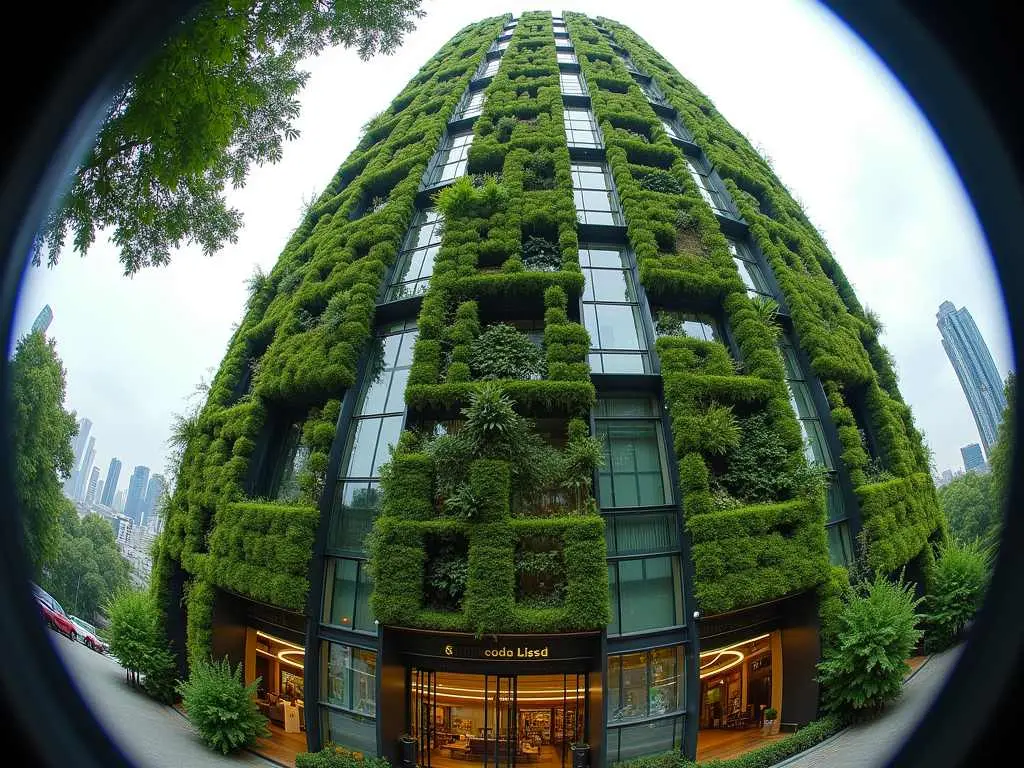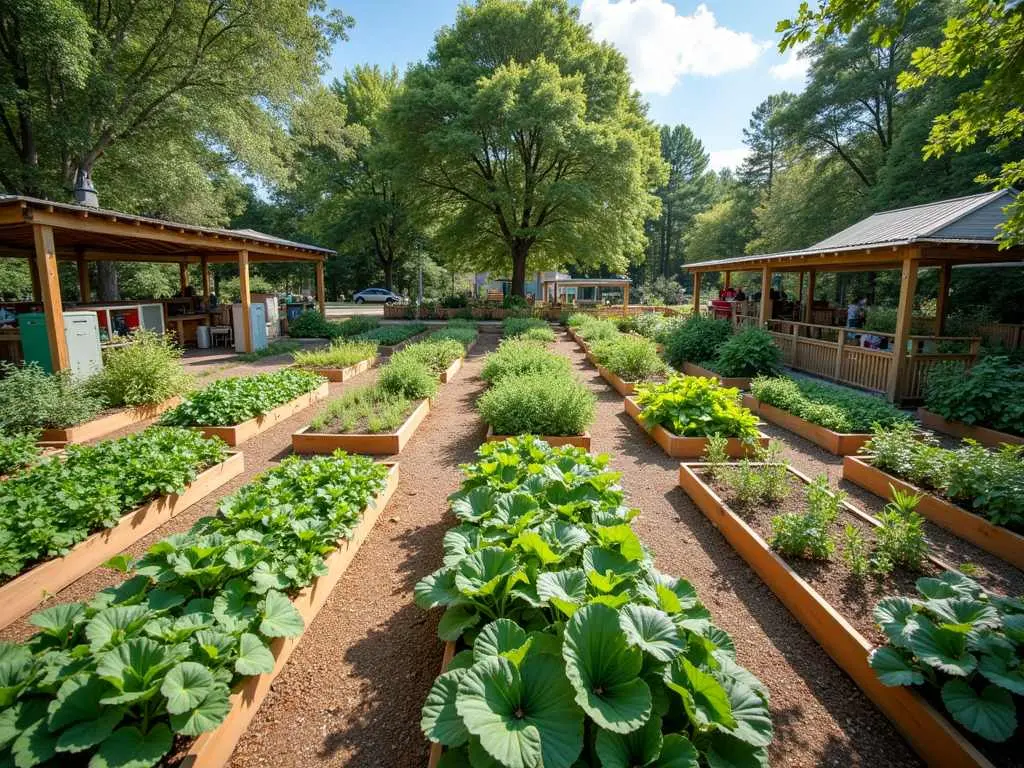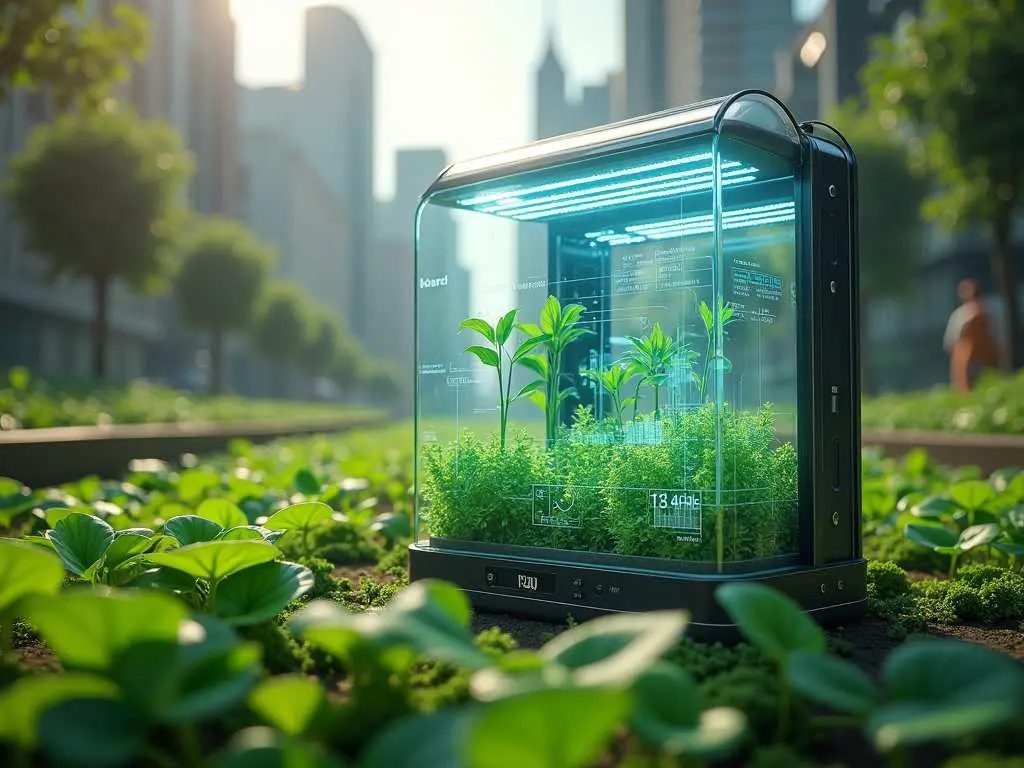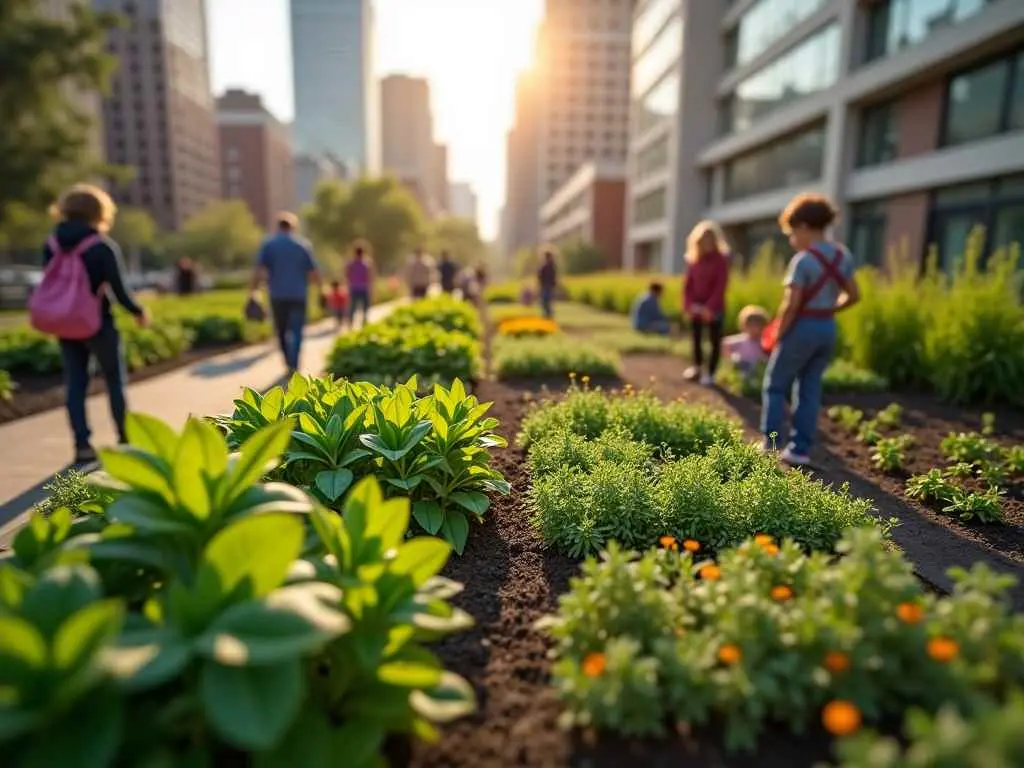As an urban planning expert with over a decade of experience in sustainable city development, I’ve witnessed firsthand the transformative power of urban gardens. At Curvspace, we believe that well-designed community spaces can revolutionize city living. This article will explore innovative urban garden designs and community garden ideas that not only beautify our cities but also foster social connections and promote environmental sustainability.
Jump to:
The Rise of Urban Gardens
Urban gardens have become increasingly popular in recent years, serving as vital green spaces in densely populated areas. These gardens offer numerous benefits, from improving air quality to providing fresh produce for local communities. According to a study by the National Recreation and Park Association, community gardens can increase property values by as much as 9.4% within a quarter-mile radius.
Innovative Urban Garden Designs

When it comes to urban garden designs, creativity knows no bounds. Here are some innovative ideas that have proven successful in various cities:
- Vertical Gardens: Ideal for space-constrained areas, vertical gardens make use of walls and structures to grow plants upwards. These can range from simple hanging pot systems to elaborate living walls.
- Rooftop Gardens: Transforming unused roof space into lush gardens not only provides a green oasis but also helps in insulating buildings and reducing energy costs.
- Pocket Parks: These small urban gardens, often created on vacant lots, provide a quick nature retreat for city dwellers.
- Community Orchards: Planting fruit trees in public spaces offers free, nutritious food to residents while beautifying the area.
- Pollinator Gardens: Designed to attract bees, butterflies, and other pollinators, these gardens play a crucial role in urban ecosystems.
Community Garden Ideas
Community gardens are more than just spaces to grow plants; they’re hubs for social interaction and learning. Here are some ideas to make your community garden thrive:
- Theme Gardens: Create sections based on themes like a sensory garden, herb garden, or native plant garden to cater to diverse interests.
- Intergenerational Programs: Pair older gardeners with youth to foster knowledge sharing and community bonding.
- Garden-to-Table Initiatives: Partner with local restaurants or community kitchens to use garden produce, promoting local food systems.
- Art Installations: Incorporate sculptures or murals to add visual interest and attract visitors.
- Educational Workshops: Host regular workshops on gardening techniques, composting, and sustainable living.
Designing for Sustainability
Sustainable design is crucial for the long-term success of urban gardens. The U.S. Environmental Protection Agency recommends several practices for sustainable landscaping, including using native plants, implementing efficient irrigation systems, and practicing integrated pest management.

Overcoming Urban Garden Challenges
While urban gardens offer numerous benefits, they also come with unique challenges:
- Limited Space: Utilize vertical gardening techniques and choose compact plant varieties.
- Soil Quality: Implement raised beds or container gardening to overcome poor urban soil conditions.
- Water Management: Install rainwater harvesting systems and use drought-resistant plants.
- Air Pollution: Choose plants known for their air-purifying qualities, such as spider plants or peace lilies.
- Community Engagement: Organize regular events and create a strong online presence to keep the community involved.
The Impact of Urban Gardens on Community Health
Urban gardens don’t just beautify our cities; they also have a significant impact on community health. A study published in the Journal of Public Health found that community gardeners consumed 5.7 times more fruits and vegetables per day than non-gardeners.
Future Trends in Urban Gardening

As we look to the future, several exciting trends are emerging in urban gardening:
- Smart Gardens: Incorporating IoT devices for automated watering and monitoring.
- Aquaponics: Combining fish farming with plant cultivation in a symbiotic environment.
- Edible Landscapes: Integrating food-producing plants into ornamental designs.
- Therapeutic Gardens: Designed specifically for mental health and rehabilitation purposes.
- Climate-Resilient Gardens: Focusing on plants and designs that can withstand extreme weather conditions.
People Also Ask
How do I start a community garden in my neighborhood?
To start a community garden, begin by gathering interested neighbors, identifying a suitable location, and obtaining necessary permissions. Develop a plan for garden layout, maintenance, and resource allocation. Seek support from local authorities or non-profit organizations specializing in community gardens.
What are the best plants for urban gardens?
The best plants for urban gardens depend on your specific conditions, but some versatile options include herbs (basil, mint, rosemary), leafy greens (lettuce, kale, spinach), tomatoes, peppers, and compact fruit trees. Consider factors like sunlight, space, and local climate when choosing plants.
How can urban gardens improve air quality?
Urban gardens improve air quality by absorbing carbon dioxide and releasing oxygen through photosynthesis. They also trap airborne particulates on their leaves and stems, effectively filtering the air. Certain plants, like spider plants and peace lilies, are particularly effective at removing indoor air pollutants.
Conclusion
Urban gardens are more than just green spaces; they’re catalysts for community building, environmental sustainability, and improved quality of life in our cities. By implementing innovative designs and community-focused ideas, we can create vibrant, healthy urban environments that benefit everyone. As we continue to face urban challenges, the role of these green oases in our cities will only grow in importance.
References
1 National Recreation and Park Association. (2020). The Economic Impact of Local Parks.
2 U.S. Environmental Protection Agency. (2021). Sustainable Landscaping Practices.3 Alaimo, K., Packnett, E., Miles, R. A., & Kruger, D. J. (2008). Fruit and vegetable intake among urban community gardeners. Journal of nutrition education and behavior, 40(2), 94-101.
Disclosure
Our content is reader-supported. This means if you click on some of our links, then we may earn a commission. Commissions do not affect our editor’s opinions or evaluations. Learn more about our editorial process.

About the Editorial Staff
The Curvspace editorial team comprises a diverse group of experts on intermediate and threshold spaces in homes and workplaces. Architects and interior designers, civil engineers and artists, environmental and behavioral psychologists, sociologists and anthropologists. All collaborate to create helpful content, that explores the full potential of these often-overlooked areas to enhance our daily lives.


